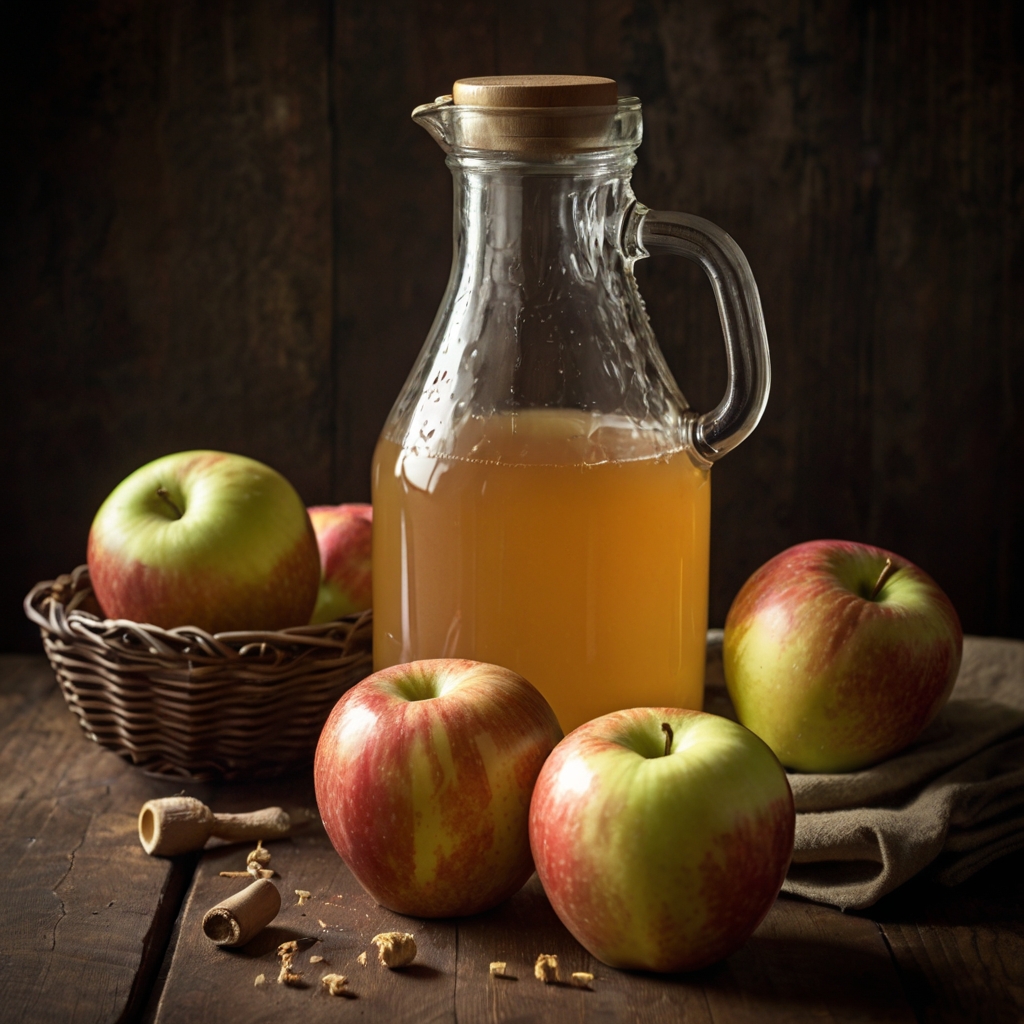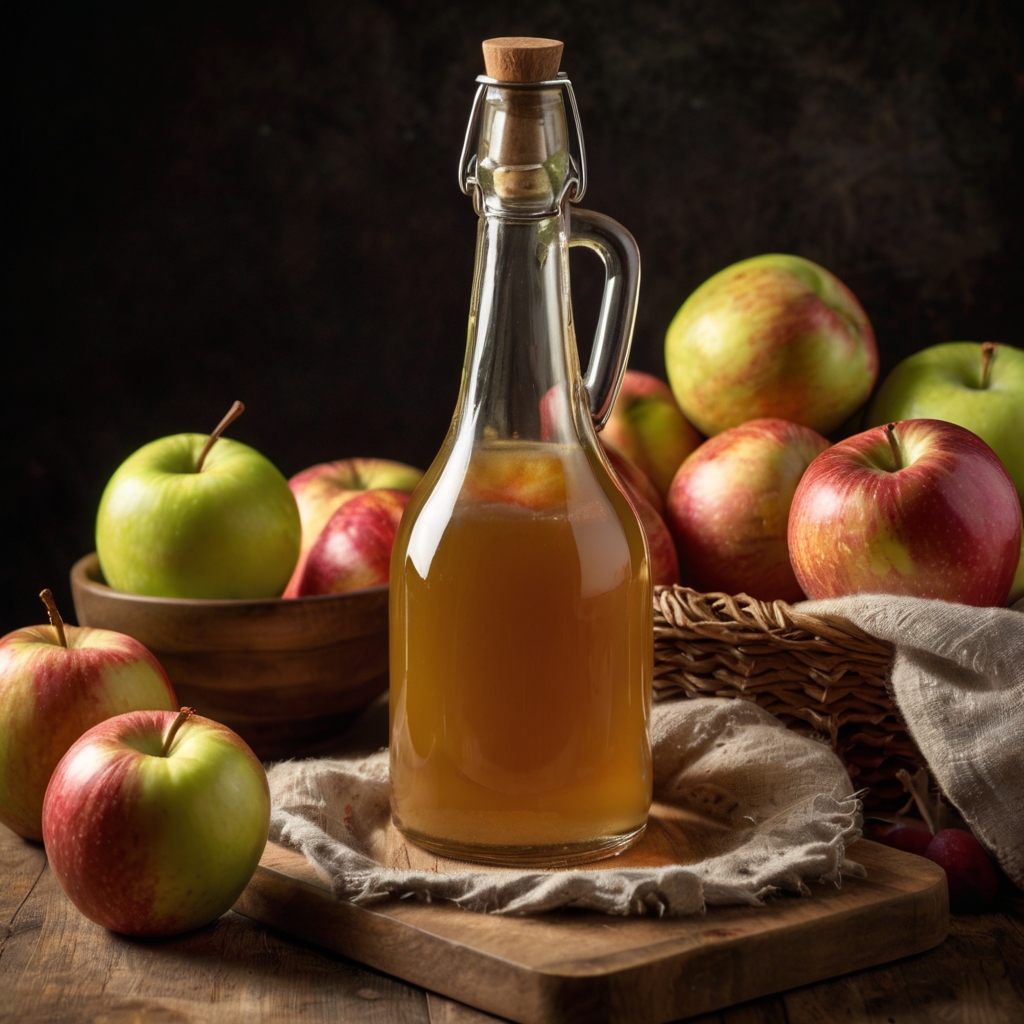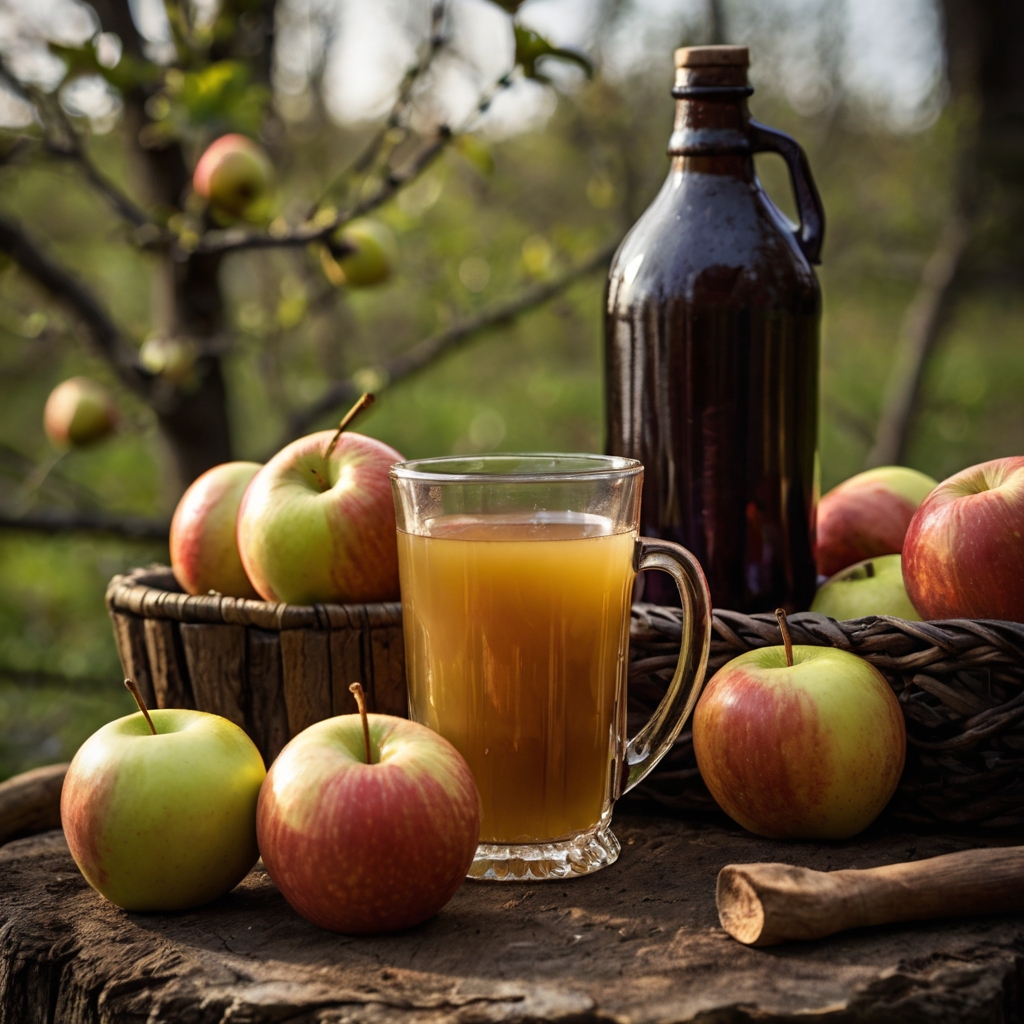Cooking Apple Cider at Home: The Ultimate Guide

Hi, my name is Chef Marcus. I’ve been standing over stoves and simmering pots for nearly two decades, but few things bring the kind of comfort and depth of aroma as a batch of apple cider gently bubbling away. Whether you’re brewing it to warm up a winter evening, using it as a cooking liquid in savory dishes, or serving it at a holiday gathering, cooking apple cider is more than just boiling apples—it’s about crafting an experience. In this guide, I’ll walk you through every step, tip, and trick I’ve learned through years of testing and refining cider recipes in both professional and home kitchens.
Cooking Apple Cider
Difference Between Apple Cider and Apple Juice

Let’s clear up a common confusion right away. Apple cider and apple juice are not the same thing. Apple cider is raw, unfiltered, and often unpasteurized—it’s made by crushing fresh apples and bottling the resulting liquid. It’s cloudy, tangy, and full-bodied. Apple juice, by contrast, is filtered, pasteurized, and usually sweetened.
When we talk about cooking apple cider, we’re usually referring to sweet, non-alcoholic cider that’s been heated and enhanced with spices, citrus, or herbs for culinary use.
Pro Tip: Never use shelf-stable apple juice as a base for cooking cider. You’ll end up with a flat, sugary drink that lacks complexity. Use fresh cider if possible.
Types of Apple Cider: Hard, Sweet, and Cooking Cider
There are three basic categories:
| Type | Description | Best Use |
| Sweet Cider | Fresh-pressed apple juice, unfermented | Ideal for warm spiced cider and cooking |
| Hard Cider | Fermented, contains alcohol | Great for savory sauces, glazes |
| Cooking Cider | Sometimes sold concentrated for culinary use | Use sparingly—it’s intense in flavor |
Sweet cider is the workhorse of most recipes. It’s versatile and accepts spices beautifully. Hard cider, while alcoholic, can add complexity to pan sauces or reductions. Cooking cider concentrates—like those used in commercial kitchens—are strong and tart. They require dilution and balance.
Best Apples to Use for Cooking Apple Cider
If you’re making your own cider from scratch or blending flavors, the type of apple matters. The best cider comes from a mix of sweet, tart, and aromatic apples.
| Apple Type | Flavor Profile | Why It Works |
| Fuji | Sweet, crisp | Adds body and sugar |
| Granny Smith | Tart, tangy | Balances sweetness, adds brightness |
| Honeycrisp | Juicy, floral | Offers complexity and fragrance |
| McIntosh | Soft, spicy | Melts into the cider, classic cider apple |
Chef’s Blend Recommendation: Use 50% sweet (Fuji or Gala), 30% tart (Granny Smith), and 20% aromatic (Honeycrisp or McIntosh).
How to Make Homemade Cooking Apple Cider
Easy Slow Cooker Apple Cider Recipe
This is my go-to method when I want the house to smell like autumn for hours.
Ingredients:
- 10–12 apples, quartered (mixed types)
- 1 orange, sliced (optional)
- 3 cinnamon sticks
- 1 tbsp whole cloves
- 1 tbsp allspice berries
- 8 cups water
- ½ cup brown sugar (adjust to taste)
Instructions:
- Add all ingredients to the slow cooker.
- Cover and cook on low for 6–8 hours.
- Mash the fruit with a potato masher.
- Strain through a fine mesh or cheesecloth.
- Taste and adjust sweetness if needed.
Tip: Want more spice? Add a slice of fresh ginger or a star anise pod.
Stovetop Apple Cider Method
If you’re short on time, stovetop cider is fast and flavorful.
Instructions:
- Add the same ingredients to a large stockpot.
- Bring to a boil, then reduce to simmer.
- Simmer uncovered for 1.5–2 hours.
- Mash, strain, and sweeten to taste.
Watch the heat—don’t boil for too long or you’ll reduce the liquid too quickly and the flavors may turn bitter.
Pressure Cooker (Instant Pot) Apple Cider
This is your 30-minute cider miracle.
Steps:
- Add all ingredients to the pressure cooker.
- Seal and cook on Manual High Pressure for 15 minutes.
- Let naturally release for 10 minutes.
- Strain and serve.
Tips for Infusing Extra Flavor
- Add a splash of maple syrup or vanilla extract after cooking.
- Try whole cardamom pods or a sprig of rosemary for an herbal note.
How Long Should You Cook Apple Cider?
| Method | Cooking Time | Flavor Depth |
| Slow Cooker | 6–8 hrs | Deep, mellow |
| Stovetop | 2 hrs | Medium-rich |
| Pressure Cook | 15 mins | Brighter, fresh |
Flavor Variations for Apple Cider
Not all apple cider has to taste the same. The beauty of making it at home is that you control the flavor profile. Whether you’re looking for something cozy, refreshing, or bold, there’s a variation that can match the season or mood. These are some of my favorites from the test kitchen — and from my own dinner parties.
Spiced Apple Cider (With Cinnamon, Clove, and Nutmeg)
This is the classic. If you’ve ever walked into a holiday market and caught that nostalgic aroma wafting through the air — this is it.
How I do it:
- Use whole cinnamon sticks, not ground. Trust me, it makes a difference.
- Add whole cloves, a few crushed allspice berries, and a pinch of freshly grated nutmeg.
- Simmer low and slow. The goal is infusion, not intensity.
Pro Tip: Toast the spices in a dry pan for 30 seconds before adding to the cider. It wakes them up.
Citrus-Infused Apple Cider
When I want brightness and a cleaner finish, I bring citrus into the mix. Lemon, orange, and even grapefruit can cut through sweetness and add dimension.
Best combos:
- Apple + Orange + Star Anise = Light & elegant
- Apple + Lemon + Ginger = Fresh with a bit of zing
Slice the citrus thin — including the peel — and let it simmer right in the pot. For more bite, squeeze fresh juice in right before serving.
Cranberry Apple Cider for a Festive Twist
This one’s a holiday favorite in my kitchen. Tart cranberries balance the sweetness of the apples and give your cider a rich ruby hue.
How to make it:
- Add 1 cup fresh or frozen cranberries to your cider base.
- Sweeten with maple syrup instead of sugar for an earthy note.
- Optional: a splash of orange juice or zest at the end to round things out.
I always strain this one well. The cranberries can break down and cloud the final drink if left too long.
Apple Cider with Ginger and Turmeric (Immunity Boost)

This is functional flavor. I developed this blend during winter months for its warming, anti-inflammatory properties — and because it just tastes incredible.
What you’ll need:
- 2-inch piece of fresh ginger, sliced
- 1 tsp ground or freshly grated turmeric
- Pinch of black pepper (activates turmeric)
- Optional: raw honey or agave for sweetness
Let it steep rather than boil — high heat can dull the medicinal qualities of turmeric and honey.
Using Apple Cider in Recipes
Cider isn’t just for sipping. One of the secrets I share with my students is that apple cider works just as well as a cooking ingredient — not just a drink. Its natural sugars, acidity, and depth make it a star in glazes, batters, sauces, and more.
Apple Cider Glaze for Roasted Vegetables
One of my favorite ways to turn a tray of roasted root vegetables into a showstopper.
How to make the glaze:
- Reduce 1 cup apple cider with 1 tbsp Dijon mustard and 1 tbsp balsamic vinegar.
- Simmer until syrupy — about 15 minutes.
- Toss with roasted carrots, sweet potatoes, or Brussels sprouts.
Add fresh thyme at the end for a savory edge.
Apple Cider in Baking: Muffins, Cakes, and Doughnuts
Cider adds flavor and moisture to baked goods. The acidity also activates baking soda for a better rise.
My go-to uses:
- Replace milk or water in muffin recipes with cider.
- Simmer cider into a concentrate for a bold apple punch in cakes.
- Mix with cinnamon sugar for glazing doughnuts.
I always reduce cider by half before using it in baking — it intensifies the flavor and keeps batters from becoming too wet.
Savory Apple Cider Sauces for Meats and Tofu
Here’s where things get exciting in the pan. Cider can deglaze like wine, caramelize like stock, and glaze like a reduction.
Ideas from my kitchen:
- Apple cider + shallots + mustard = Perfect for pork or baked tofu
- Cider + rosemary + a knob of vegan butter = Divine over grilled seitan or roast squash
When reducing cider for sauces, keep it uncovered and stir often. You’re building flavor, not just boiling liquid.
Apple Cider Cocktails and Mocktails
Yes, cider belongs at the bar too. It’s a versatile mixer that plays well with both spirits and soda.
| Cocktail Type | Ingredients | Notes |
| Spiked Cider | Bourbon, cider, cinnamon stick | Warm or chilled; serve with orange peel |
| Apple Mule | Vodka, cider, ginger beer, lime | Refreshing and easy to batch |
| Mocktail Punch | Cider, cranberry juice, sparkling water, mint | Family-friendly, vibrant, and festive |
Garnish is everything. A slice of apple, sprig of rosemary, or sugared rim elevates even the simplest drink.
Storage and Shelf Life of Cooked Apple Cider
So, you’ve just made a big batch of apple cider and the kitchen smells incredible. But now you’re wondering — how long will it stay good? And can you bottle it up for later? Here’s what I recommend from years of preserving batches for both home use and restaurant menus.
How Long Does Homemade Apple Cider Last?
If you’ve kept it simple — apples, water, spices — your cider should last:
- In the fridge: 5 to 7 days, tightly sealed.
- Hot-processed and bottled: Up to 3 weeks, refrigerated.
- Pasteurized and sealed: Up to 2 months, depending on acidity.
The trick is to keep it cold and airtight. Oxygen is the enemy of freshness here.
Tips for Bottling and Preserving Cider
Want to gift it or store for the season? Here’s a quick bottling guide I’ve used during culinary workshops.
| Step | Action | Notes |
| 1 | Sterilize glass bottles or mason jars | Boil for 10 minutes or use dishwasher’s sanitize cycle |
| 2 | Pour hot cider into bottles | Use a funnel and wear gloves to avoid burns |
| 3 | Seal immediately | Tightly with lids or swing-top caps |
| 4 | Cool at room temp, then refrigerate | Avoid dramatic temperature shifts |
Add a cinnamon stick or citrus slice before sealing for flavor and a beautiful visual touch.
Nutritional Value of Cooking Apple Cider
Let’s talk health. I’m a chef, not a dietitian — but I’ve worked alongside enough nutritionists to understand what goes into the pot, and how it affects your body.
Calories and Natural Sugar Content
One cup of homemade apple cider (unsweetened) usually contains:
- Calories: 90–120 kcal
- Natural sugars: 20–25g
- Fat: 0g
- Fiber: Trace amounts unless pulp is left in
Most of the sugar in cider is naturally occurring from apples. Adding sweeteners like brown sugar or maple syrup can push that number higher — so be mindful if you’re serving kids or managing sugar intake.
Vitamins and Antioxidants in Apple Cider
Apples aren’t just tasty — they’re full of nutrients that survive gentle cooking.
Vitamin C, Polyphenols, and Gut Health
| Nutrient | What It Does | Found In |
| Vitamin C | Supports immune system, skin, and healing | Best preserved when cider isn’t overcooked |
| Polyphenols | Fight oxidative stress, may support heart health | Especially high in red apples |
| Pectin (fiber) | Supports digestion, balances blood sugar | Present if cider is unfiltered |
For an extra antioxidant boost, add spices like cinnamon, ginger, and cloves — they each bring their own health perks to the pot.
Is Cooked Apple Cider Good for You?
When made without added sugars, yes — it’s a great alternative to soda or overly sweet drinks. It hydrates, comforts, and supplies natural compounds from apples that support your immune system.
My general rule: if it tastes great and makes you feel good afterward, it’s worth keeping in your rotation.
Low-Sugar and No-Added-Sugar Versions

Here’s how I make cider lighter without compromising flavor:
- Use naturally tart apples: Granny Smith, Pink Lady, or Braeburn
- Skip sweeteners and add cinnamon or citrus zest instead
- Dilute after cooking: Mix with herbal tea or sparkling water for a refreshing version
I’ve served low-sugar cider as a palate cleanser between tasting courses — guests are always surprised it’s not packed with sugar.
15+ FAQ about Cooking Apple Cider
1. Can I use apple juice instead of whole apples?
Yes, but choose unfiltered and unsweetened juice for best results.
2. What spices go best with cider?
Cinnamon, cloves, nutmeg, allspice, and ginger are classics.
3. Can I make cider in advance?
Absolutely — it often tastes better the next day.
4.What’s the difference between hot cider and mulled cider?
Mulled cider is infused with spices; hot cider may just be warmed up.
5.Can kids drink cooked apple cider?
Yes, as long as it’s non-alcoholic and not overly spiced.
6.What’s the best way to sweeten cider naturally?
Try maple syrup, medjool dates, or even mashed pears.
7.Can I make it in a microwave?
Technically yes, but stovetop or slow cooker yields better depth.
8.Why does my cider taste flat?
It may need acid (like citrus), more spices, or longer steeping.
9.Can I ferment cider at home?
Yes — but that’s a whole different topic (and article).
10.Is apple cider vinegar made from cider?
It starts with fermented apple cider, then turns into vinegar.
11.What’s a good cider for cocktails?
Crisp, filtered cider with balanced acidity works best.
12.Can I use cider to deglaze a pan?
Yes — it lifts fond and adds natural sweetness to sauces.
13.Does apple cider contain caffeine?
No — it’s caffeine-free unless mixed with tea or coffee.
14.Can I can apple cider at home?
Yes, with proper sterilization and hot water bath method.
15.Is cloudy cider better than clear?
Cloudy cider retains more fiber and polyphenols.